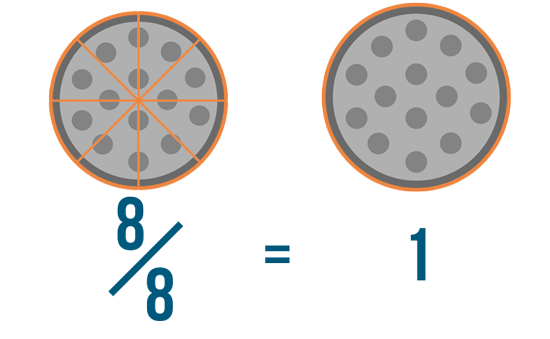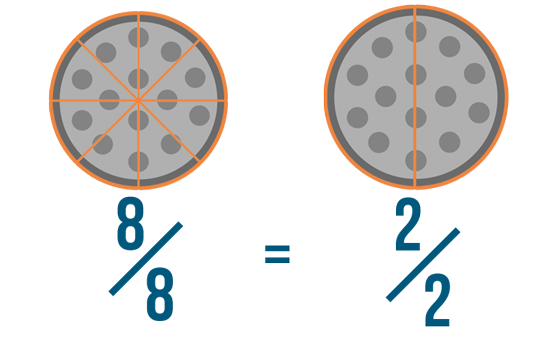Fractions
Introduction to Fractions
Whole fractions
So far, you've learned that a fraction is a part of a whole. For example, 3/4 means you have three parts out of four parts total. But what if you had a fraction like this?
8/8
In this example, we have eight parts out of eight parts total. If the top number and the bottom number of a fraction are the same, then the fraction is equal to 1. That's because you have every part of the fraction, or one whole thing. This is sometimes known as a whole fraction.
So if you had eight slices of pizza out of eight total, you'd have one whole pizza.

Let's look at another example: 8/8 and 2/2. While these fractions may look different, they're actually just two ways of saying the same thing. Because these are whole fractions, 8/8 and 2/2 are both equal to 1. And because they're both equal to 1, they're also equal to each other.

Now you try it! Write the correct whole fraction under each picture.






